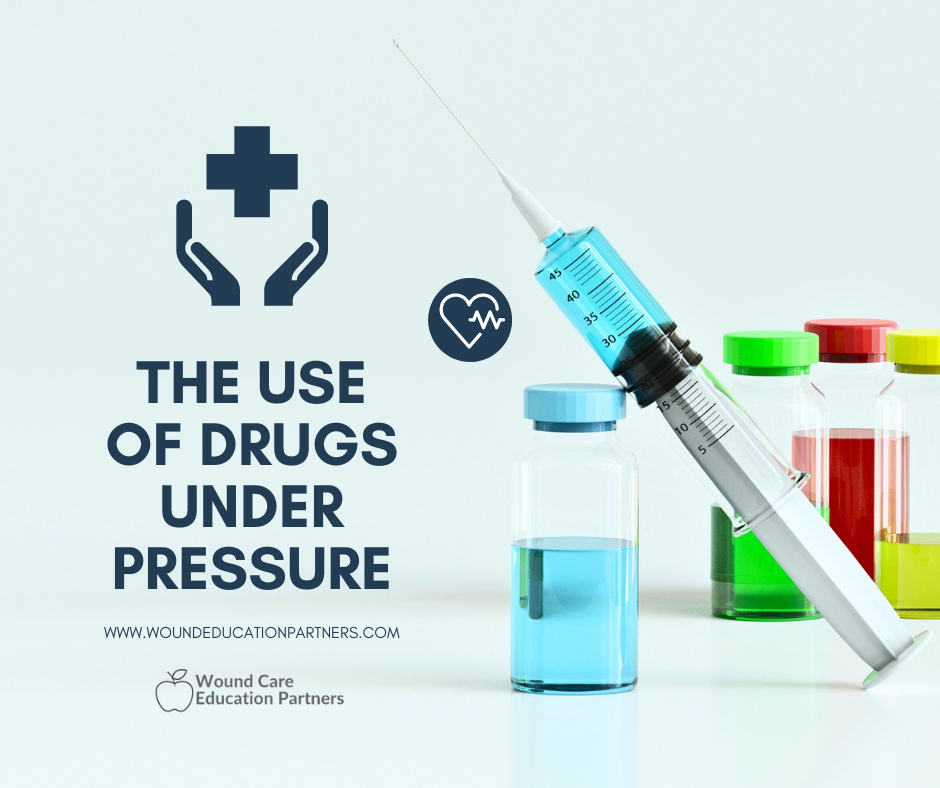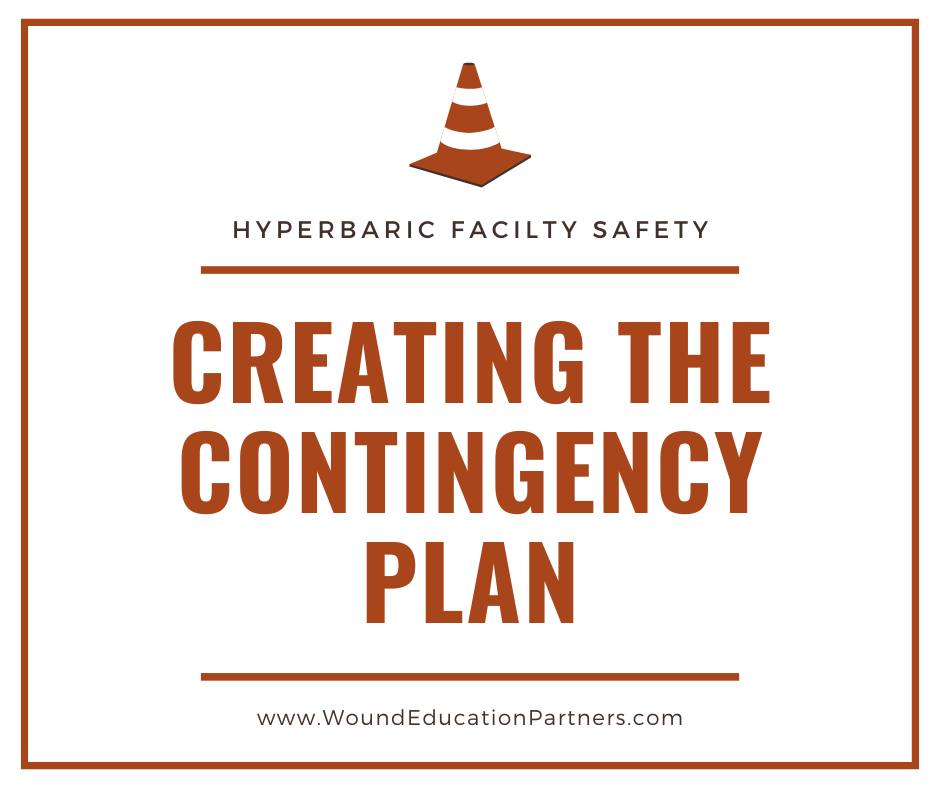Have you ever attended one of our Introduction to Hyperbaric Medicine courses? Last week we had the pleasure of learning from Dr. Larry Chase, MD, UHM, CWSP who kicked off Day 1 of the 4-day program.
Rx Pad
A hyperbaric and hyperoxic environment creates numerous considerations for the use of drug therapies within it. First, the physical stress of hyperbaria impacts drug storage and has implications on which containers are most appropriate for use. Second, physiologic changes to the body from hyperbaria and hyperoxia may lead to pharmacokinetic changes in drug disposition. Lastly, hyperbaric oxygen acting as a drug can interact and enhance or ameliorate the physiologic effect of a drug.
Analysis of hazards and risk assessment allows us to understand the true nature of the potential incident we are attempting to manage. This is an important first step in designing a contingency plan. There are several other important considerations that affect the design of the plan. Realizing the potential damage or injury helps us to identify appropriate staff responses. These responses should minimize the impact of the incident. It is important to consider what personnel are available to help (e.g., additional staff members, code team, and emergency responders) and how these individuals are capable of participating in the plan. Designing contingency plans with available personnel in mind drives minimum facility staffing decisions. It is also important to consider what equipment is available (e.g., personal protection, patient transportation, fire-fighting, and crash cart). All the considerations discussed above are likely to vary among different hyperbaric facilities.
Current knowledge indicates that there are multiple mechanisms of action of hyperbaric oxygen therapy in CO poisoning. Based on the law of mass action, elevated partial pressures of O2 will accelerate the rate of CO dissociation from hemoglobin. Thus, COHb half-life can be decreased from approximately 5 .5 hours when breathing air and to approximately 20 minutes when breathing O2 at 3 ATA. Indeed, this was the reasoning behind the first clinical implementation of hyperbaric oxygen therapy for CO poisoning. As the COHb level is not associated with clinical risk, it is hard to accept that a more rapid dissociation of CO from hemoglobin could be the central factor for the benefit of hyperbaric oxygen . A fraction of the acute mortality from CO is due to hypoxia, however, and prompt removal of CO from hemoglobin will be of benefit . HBO2 also promotes normalization of tissue hypoxia. CO binds to cytochrome oxidase, particularly when the COHb level exceeds 40% to 50% . Brown and Piantadosi demonstrated that hyperbaric oxygen at 3 ATA markedly accelerates the dissociation of CO from cytochrome oxidase. Furthermore, it was shown that HBO2 completely reversed brain mitochondrial electron transport chain inhibition by CO. Hyperbaric oxygen also has effects related to the cascade of vascular injury triggered by CO poisoning. Hyperbaric oxygen was found to be effective for preventing brain oxidative injury through increased heme oxygenase and upregulation of antioxidants. The mechanism appears to be associated with denaturation of a membrane-associated guanylate cyclase that plays a role in coordinating the elevated affinity of beta 2 integrins expressed on the cell surface. Given that vascular changes are prominent in clinical CO poisoning, it is feasible that neurological sequelae in patients may involve a perivascular injury mediated by leukocyte sequestration and activation. Moreover, HBO2 reduces neuronal apoptosis and necrosis, and it also mobilizes stem cells via a nitric oxide–dependent mechanism. Hence, timely administration of hyperbaric oxygen may ameliorate the cascade leading to brain injury via multiple mechanisms.
Carbon monoxide exposed patients commonly present with nonspecific symptoms that mimic influenza-like illnesses (Table 1). Symptoms typically include headache, dizziness, nausea, vomiting, weakness, and fatigue . The most common symptom reported is headache . Because these symptoms are so nonspecific, the treating physician must retain a high level of suspicion for carbon monoxide poisoning as delays in recognition and treatment are common .
Carbon monoxide is a colorless, tasteless, and odorless gas. It is one of the leading causes of injury and death worldwide. Based on death certificate data, mortality from unintentional, non-fire-related carbon monoxide exposures results in an average of 439 deaths each year in the United States. However, with improved data collection through the Center for Disease Control, estimates may be closer to 2,000 deaths per year. In 2014, the National Poison Data System listed gases/fumes/vapors as the leading cause of death in children five years old or less. Furthermore, carbon monoxide poisoning results in more than 200,000 emergency department visits per year and more than 20,000 hospital admissions.
Carbon monoxide (CO) originates from incomplete combustion of carbon-containing materials. Common external exposure sources include house fires, automobile exhaust, ice resurfacing machines, furnaces, burning of charcoal, wood, and natural gas for heating or cooking, propane-powered equipment, and methylene chloride paint stripper.
Another major source of CO is cigarette smoking. Average carboxyhemoglobin levels (COHb) of 3 .0%–7 .7% are found in heavy cigarette smokers, compared to 1 .3%–2 .0% in nonsmokers.
Carbon monoxide poisoning can occur occupationally (i.e. firefighters, ice resurfacing machine or forklift operators), unintentionally, and as a means of suicide. The incidence of carbon monoxide poisoning increases during power outages caused by natural disasters. Interestingly, since the introduction of the Clean Air Act in 1970, the mortality rate from motor vehicle–related CO poisoning has declined. Carbon monoxide is also produced endogenously through the degradation of hemoglobin by heme oxidase, resulting in detectable carboxyhemoglobin levels in nonexposed individuals.
In industry, the major factor for carbon monoxide exposure is inadequate ventilation where propane-powered vehicles are used. Exposures from forklifts and ice resurfacing machines have been reported. Other work environments that produce large amounts of CO, and therefore heighten the risk of poisoning, are the steel industry, due to coke ovens, and the paint industry, in which inhaled methylene chloride (dichloromethane) is metabolized to CO by the liver. Firefighters and other first responders are also at increased risk for CO poisoning from smoke inhalation and from entering environments with elevated CO levels unknowingly.
Men have higher rates of death from carbon monoxide poisoning, presumably due to higher risk behaviors and environments. The elderly (age ≥ 65) are also at increased risk for death from CO poisoning as they are more likely to dismiss symptoms as being caused by underlying medical conditions more prevalent in this population.
Women and children, however, are more likely to be exposed to carbon monoxide, and most exposures occur in the winter months (November to February).
Source Reference: Excerpted from Hyperbaric Medicine Practice 4th Edition with permission from the publisher. Reference Chapter 13, Carbon Monoxide by Jillian Theobald
Learn More
Are you seeking basic training in hyperbaric medicine? Our UHMS and NBDHMT approved 40-hour Introduction to Hyperbaric Medicine training course will teach you and your team the key fundamental elements and concepts in practicing hyperbaric medicine safely and effectively. Find your course today! https://www.woundeducationpartners.com/live-courses/hbo-courses.html
In this third and final installment of How Accidents Happen we continue looking at personnel & management as contributing factors in hyperbaric facility accidents.
In this installment of How Accidents Happen we continue looking at personnel & management as contributing factors in hyperbaric facility accidents.
When one commences a task to reconstruct how an accident happened, personnel and management factors are often “at the head of the class.” Some of the more commonly occurring factors are discussed in this section. It should be noted, however, that this list is not all-inclusive. The factors that can contribute to accidents are many and varied. As technology and operations become ever more complex, our ability to create new ways to “do ourselves in” are amazing.
For some accidents there is a clear “smoking gun.” However, most accidents are caused by a combination of factors, each of which contributes in some manner. Often these factors accumulate over some period of time preceding the accident. This chapter addresses the factors that foster conditions under which accidents are more likely to happen and discusses some of the steps to be taken to avoid them. Also included is a case history illustrating several of the factors.










